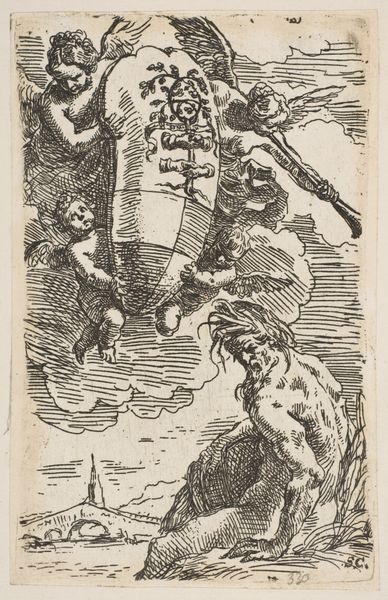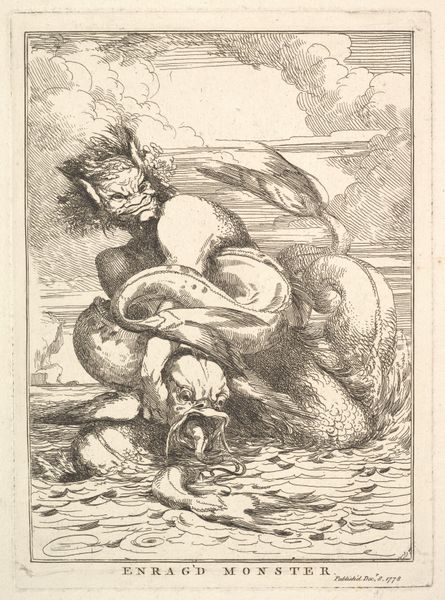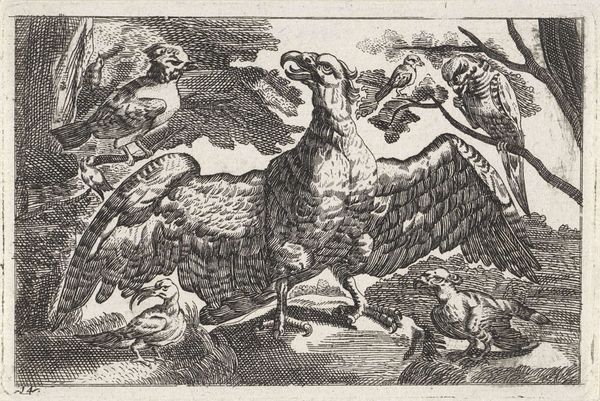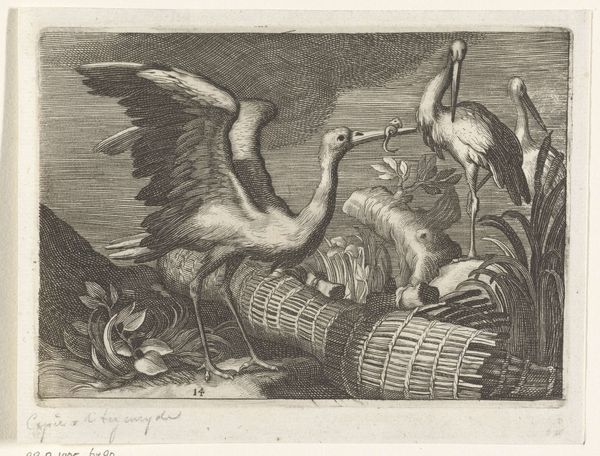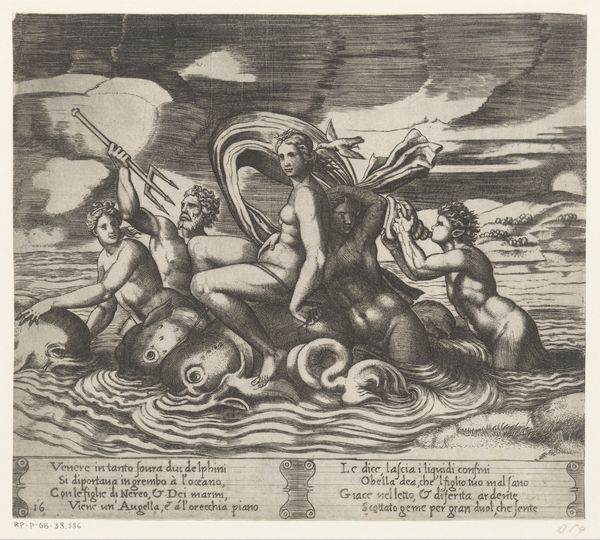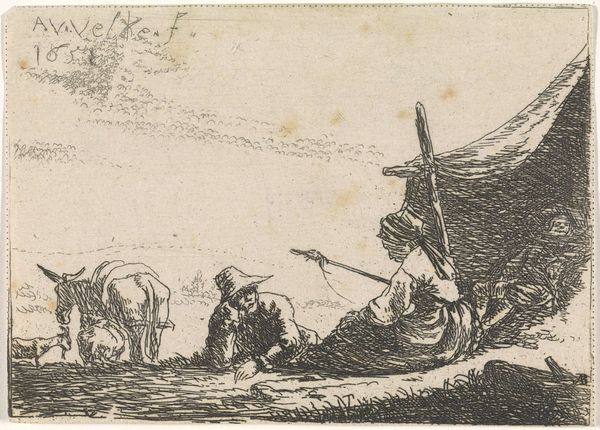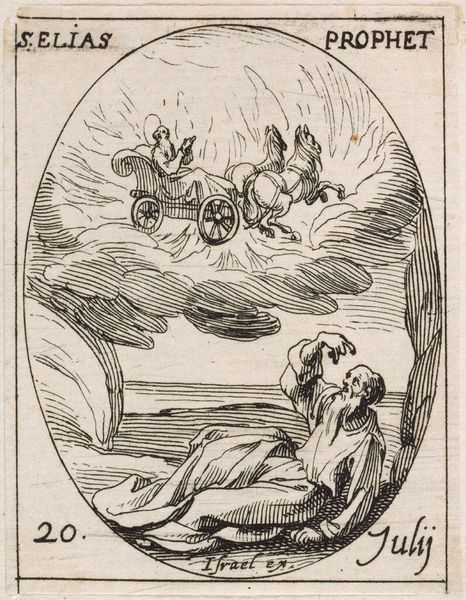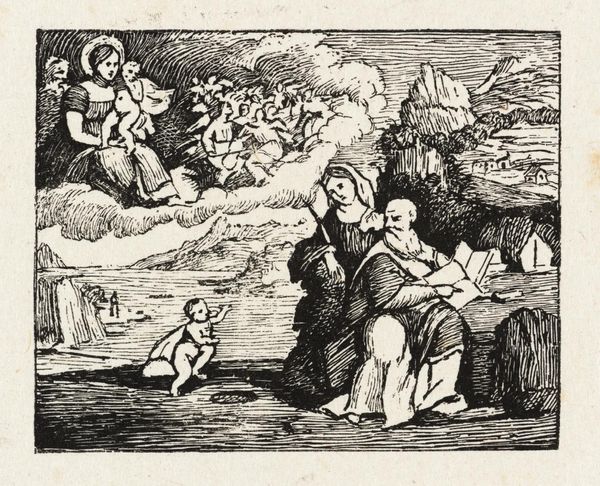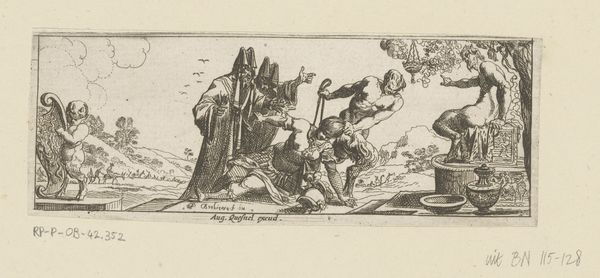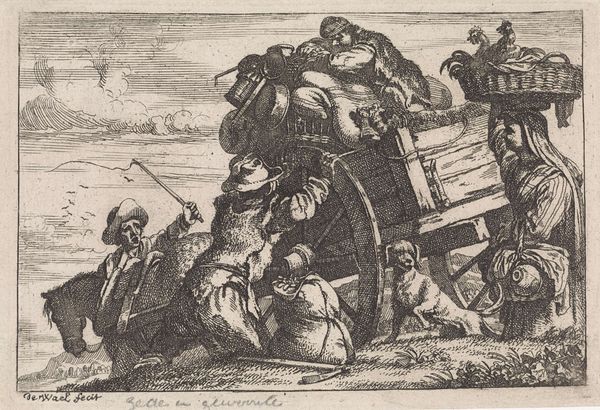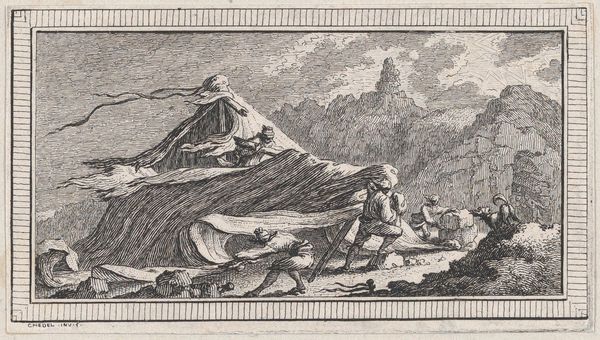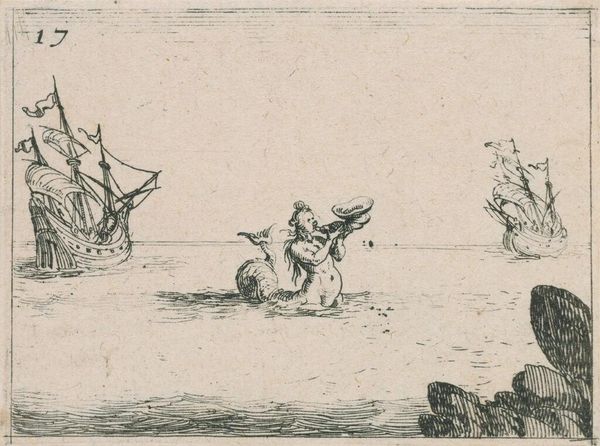
drawing, print, ink, engraving
#
drawing
#
narrative-art
#
dutch-golden-age
# print
#
landscape
#
figuration
#
ink
#
line
#
genre-painting
#
engraving
Dimensions: height 54 mm, width 78 mm
Copyright: Rijks Museum: Open Domain
Editor: Here we have Nicolaes Witsen’s "Fishermen Catching a Turtle at Sea," created sometime between 1656 and 1717. It's a small ink drawing, almost like a sketch, depicting men in a boat hauling in a sea turtle. The scene is chaotic; you can almost feel the struggle. What's your take on this piece? Curator: This seemingly straightforward genre scene provides a lens through which to examine Dutch maritime culture and its often-overlooked impact on global ecosystems. The act of capturing this turtle speaks to the intersection of commerce, colonialism, and environmental exploitation characteristic of the Dutch Golden Age. How do you view the men's relationship with the natural world based on their actions in the scene? Editor: It definitely looks like they see the turtle as a resource, not an animal. It's being hauled in, almost lifeless, for what I imagine is profit. So, this drawing might not just depict a simple fishing trip but a moment of ecological impact? Curator: Exactly. Consider how such commonplace scenes normalize the extraction of resources and erasure of local ecologies. It’s critical to understand the colonial networks through which animals like sea turtles were commodified, entering European markets, impacting both the turtles and the human populations connected to them. Editor: That's a much darker perspective than I initially considered. It really highlights the global consequences of seemingly local actions depicted in art. I wouldn't have seen that without considering its historical context. Curator: Precisely. By situating this drawing within larger narratives of coloniality and environmental change, we begin to unpack the deeper, often unsettling stories embedded in seemingly innocuous images. Perhaps it can provoke us to ask, what continuities exist in today’s systems of resource extraction? Editor: It's given me a lot to think about, both about the artwork and its relationship to bigger world issues. Thank you for pointing me to these issues!
Comments
No comments
Be the first to comment and join the conversation on the ultimate creative platform.
